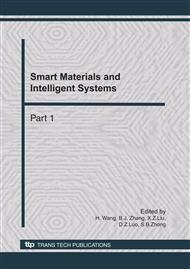p.333
p.338
p.343
p.347
p.353
p.358
p.364
p.370
p.375
Temperature Profile of Microencapsulation for Self-Healing Application
Abstract:
Healing agents significantly affect the efficiency of healing microcracks, which produced from life-time service in composites. And microencapsulating 5-ethylidene-2-norbornene (ENB) with Melamine-Urea-Formaldehyde (MUF) shell possessing higher self-healing efficiency is sensitive to the manufacture temperature profile which is difficult to control but crucial to the microcapsule performance and thus the reproducibility. In this paper, we studied the relationship between heating curve (rate, steps and time) and microcapsule performance (surface morphology, thermal stability and shell thickness). It shows that fast-slower heating stage produces the best quality of microcapsule with proper outer and inner surface which can endure 285°C, and the particle size is about 100m with 400-700nm shell thickness.
Info:
Periodical:
Pages:
353-357
Citation:
Online since:
October 2010
Authors:
Price:
Сopyright:
© 2011 Trans Tech Publications Ltd. All Rights Reserved
Share:
Citation:


